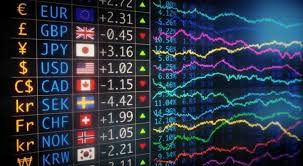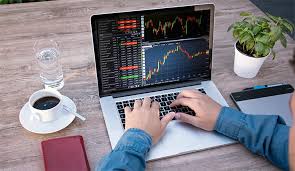The Evolution of Forex Trading Platforms A Comprehensive Guide 1641905985

The Evolution of Forex Trading Platforms: A Comprehensive Guide
In the rapidly changing world of finance, platform trading forex Best MT5 Platforms have become an essential element for traders. The Forex market operates 24 hours a day, and the trading platforms that facilitate these transactions have evolved drastically over the years. This article will delve into the evolution of forex trading platforms, their features, and the critical considerations for traders when choosing one. Understanding these aspects is crucial for success in the forex market.
History of Forex Trading Platforms
The genesis of forex trading can be traced back to the early 1970s when countries abandoned the gold standard, allowing currencies to float against one another. However, it wasn’t until the advent of the internet in the 1990s that trading became accessible to retail investors. Online forex brokers began to emerge, providing platforms that allowed individuals to trade currencies from the comfort of their homes.
Initially, these platforms were rudimentary, offering only essential features like real-time quotes and basic charting capabilities. As the technology progressed, so did the functionality of these platforms, leading to the development of sophisticated trading tools. The introduction of MetaTrader 4 (MT4) in 2005 marked a significant turning point, as it provided a user-friendly interface and a wide array of technical indicators.
The Rise of Advanced Trading Platforms
The popularity of MT4 paved the way for further innovation, leading to the launch of MetaTrader 5 (MT5) in 2010. MT5 expanded on its predecessor by incorporating additional features, including support for more asset classes, enhanced analytical tools, and an improved order management system. This evolution exemplifies the trend toward more comprehensive and intuitive trading environments.
As technology continued to advance, other platforms such as cTrader, NinjaTrader, and TradingView emerged, each offering unique features that cater to different types of traders. The development of mobile applications also revolutionized forex trading, enabling traders to manage their accounts and execute trades on-the-go, making the market more accessible than ever before.
Key Features of Modern Forex Trading Platforms
When selecting a forex trading platform, several essential features must be considered:

- User Interface: The interface should be intuitive and easy to navigate, allowing traders to access the tools and information they need quickly.
- Charting Tools: Advanced charting options with technical indicators and analysis tools are crucial for informed trading decisions.
- Order Types: A variety of order types, including limit orders, stop orders, and market orders, should be available to suit different trading strategies.
- Mobile Accessibility: In today’s fast-paced world, having a mobile-friendly platform is essential for traders who need to act quickly.
- Security: The platform should prioritize security with strong encryption protocols to protect user data and funds.
- Customer Support: Reliable customer support can assist traders with any issues that arise, ensuring a smoother trading experience.
Importance of Choosing the Right Trading Platform
Choosing the right trading platform is paramount for success in the forex market. An unsuitable platform can hinder performance and lead to missed opportunities. For instance, a platform lacking in charting tools may restrict a trader’s ability to analyze price movements, ultimately affecting trading decisions.
Moreover, different traders have varying needs. Some may prefer a platform that emphasizes social trading features, while others might prioritize automated trading systems. Understanding one’s trading style and requirements is vital in selecting a platform that aligns with individual goals.
Best Practices for Using a Forex Trading Platform
Once a trader has selected a trading platform, implementing best practices is crucial for maximizing its potential. Here are some strategies to consider:
- Leverage Demo Accounts: Utilize demo accounts to familiarize yourself with the platform’s features without the financial risk. This practice helps in honing trading skills and testing strategies.
- Regularly Update the Platform: Ensure that the platform is regularly updated to benefit from new features and security patches.
- Stay Informed: Keep abreast of market news, trends, and educational content that can enhance trading decisions.
- Utilize Analytical Tools: Make use of the analytical tools provided by the platform, such as technical analysis indicators and economic calendars, to improve market insights.
- Practice Risk Management: Implement risk management strategies to safeguard against losses. This includes setting stop-loss orders and avoiding over-leveraging.
Conclusion
As the forex market continues to evolve, so do the trading platforms that facilitate it. The transition from basic online trading systems to advanced, feature-rich platforms has revolutionized the way traders interact with the forex market. Selecting the right platform is crucial for achieving trading success, and traders must consider their individual needs and preferences to make an informed choice.
By utilizing best practices and staying informed, traders can leverage these platforms to enhance their trading experience and potentially increase their profitability. The world of forex trading is dynamic, and staying ahead of the curve with technology is essential for any serious trader.
